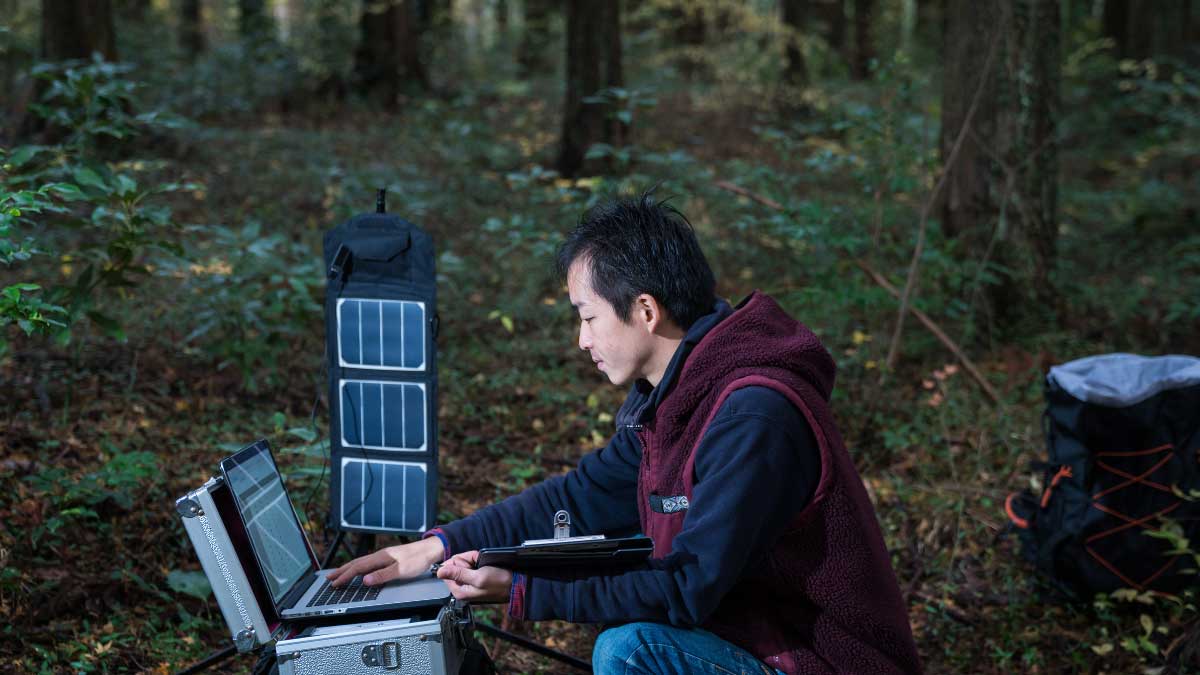A solar charger enables you to harness the power of the sun to charge devices. However, charging a laptop with a solar panel isn’t as straightforward as many hope it will be. Many are left disappointed when they hook up their solar chargers to their laptops in the hope of charging their devices and it doesn’t charge. This is not to say you can’t charge a laptop with a solar panel. Yes, you can!
You can use a solar panel to directly charge a laptop with a solar panel rated at 60 to 100 watts and the voltage must be 18v or above. A laptop requires a voltage of around 16 -18.5v to charge. This will be indicated on the adapter. If the voltage doesn’t match then it is sure not to charge. A 60-100watt panel can be sufficient to give you 5 amps on a sunny day.
The reason it doesn’t work for most solar panels is that most solar panels are rated at 12V and maybe reach a high voltage of 14v. The amps from these panels may also be insignificant and not charge the solar panel at all.
When picking a solar panel be aware of these things:
Voltage
A higher voltage rating than the laptop’s adapter rating will damage your device. A lower voltage may not damage your device but it will not charge properly.
Current (Amps)
A higher current than your device rating may not damage your device and you shouldn’t see any issues with this as long as you match the voltage. The thing is just don’t go overboard and you won’t see any performance issues.
A low current cannot damage your laptop but this may be insignificant to charge your battery. You might see the laptop charging but the laptop when not powered on, or you may run on power but the battery won’t charge.
Wattage
As stated before you need 3 to 5 amps to charge a laptop. So if you need around 18 to 20 volts that will be around 50 watts.
3A x 20V = 60 Watts
So theoretically you need a solar panel rated at 60 Watts or higher to charge your laptop.

Connectors
There are different connectors for different laptops. This applies when you are replacing your adaptors and also when choosing a solar panel. Ensure to match your connector size to the solar panel. But luckily most solar panels come with different size connectors
| Laptop | DC Connector size |
| Acer | 5.5 x 1.7 mm |
| Asus | 4.0 x 1.35 mm |
| HP/Dell | 7.4 x 5.0 mm |
| Samsung | 5.5 x 2.5 mm |
| Lenovo | 7.9 x 5.6 mm |
Reverse Polarity
Reverse polarity is when a solar panel rather than charging a battery it discharges it. This is especially a risk during nighttime when there is no sunlight and the voltage of the laptop drops to lower than that of the battery. Most modern panels come with a blocking diode to prevent reverse polarity and some laptops have also embedded a form of reverse polarity protection on their circuit.
The downside of Charging Your Laptop with a Solar Charger
The output from a solar panel is dependent on the size and amount of sunlight. Solar panels are known to be low efficiency and the best output you can get from a solar charger won’t exceed 30%.

This means that even the voltage may be dropping from time to time and it is only when you are getting direct sunlight between midday and the afternoon that can you truly use a solar charger on your laptop. Otherwise, it will just charge your phone.
It’s either this or you may have to get a bigger size solar panel to cover for the efficiency/conversion losses. The good news is you have a better choice if these two options are out of the question.
Why you need a power bank
You remove so many risks of frying your laptop when you use a power bank rather than using the solar panel to directly charge a laptop. Because of the voltage and current changes from the solar panel, you may end up not charging your laptop at all. Especially if you intend to leave it unattended.
Charging a power bank with the solar panel is the best option because even with current and voltage changes it will still charge the power bank. I use the Maxoak Power bank, a massive 50000mAh lithium-ion battery bank that will act as two extra batteries for your laptop. It has multiple dc connectors compatible with most laptops. It comes with 6 output ports for laptops, tablets, and USB. The multiple outputs allow you to charge several devices at once.
I like it because I can recharge it with my 60W Allpowers Solar Panel through its 16.V/2.5A DC input. It is bigger than most power banks (briefcase size) but easily fits my backpack, and doesn’t weigh much (2.77 lb) of course, once I use it to recharge my laptop I can recharge it with my solar panels when I am in the outdoors or using an AC plug when indoors.
Also, consider a Power Station
A portable power station unlike a power bank is more than just a battery. It combines an inverter, charge controller, and wiring to make it easier for a plug-and-play system to use with solar panels. The LiFePO4 battery in power stations is also much safer than Lithium-ion in power banks that are more susceptible to exploding. You can also use it to charge other devices like a CPAP and even power your refrigerator with either an AC or DC power supply.
You are here